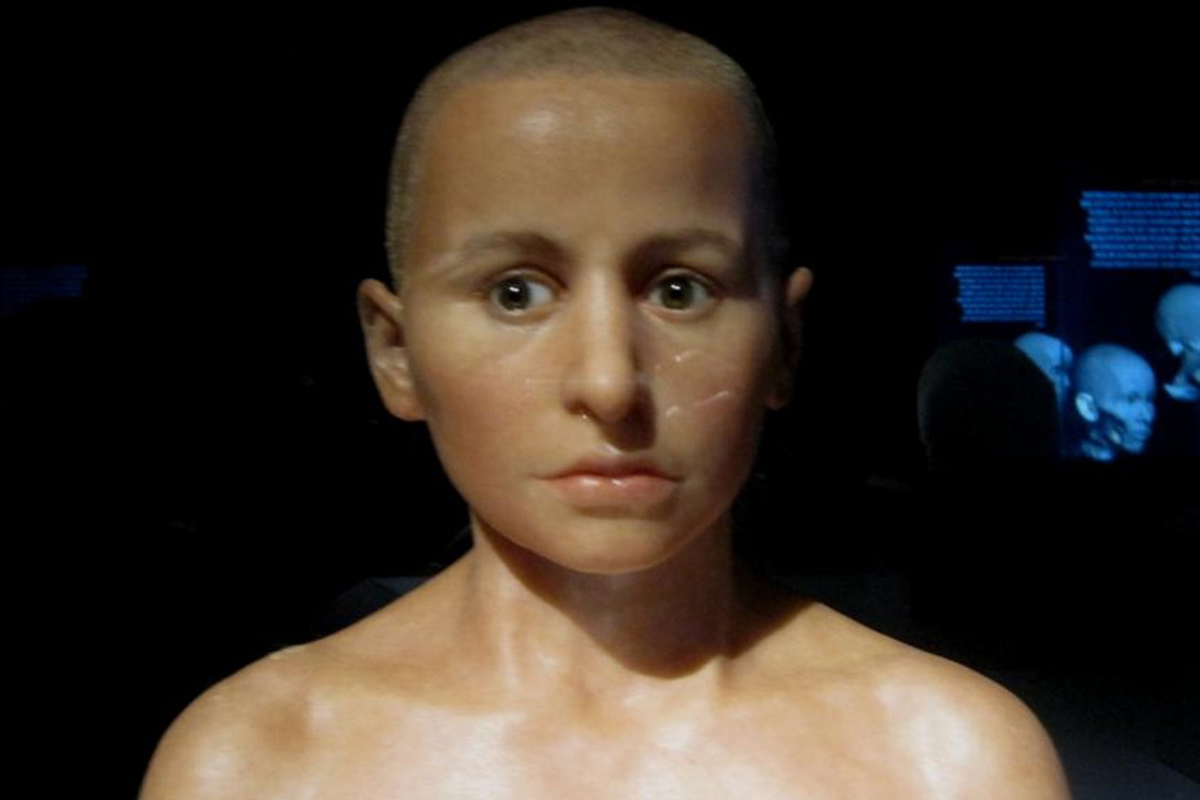Scientists discover an abnormally large brain in an ancient Egyptian mummy
[ad_1]

“The eyes of a thousand years ago watch the people of the present”
Scientists have reconstructed the face of an ancient Egyptian mummy of a 14-year-old boy who suffered from a rare disease 2,300 years ago. A young member of ancient Egypt’s elite had an abnormally large brain.
For the first time in 2,300 years, the face of an ancient Egyptian mummy with an abnormally large brain has been reconstructed. As he writes Daily Mailthe mummy belonged to the ancient Egyptian elite, and the boy was only 14 years old when he unfortunately died.
Minirdis – that was the teenager’s name – was the scion of a clergyman’s family and before his death was supposed to inherit the position of his father, Inaros, a priest of the Egyptian god of fertility Min. But he died at about the age of 14, and his mummified remains were buried in the Akhmim cemetery in Upper Egypt, where they were found in 1925.
Now scientists trying to reconstruct his face have diagnosed the teenager with a rare disease.
Cicero Moraes, lead author of the upcoming study, says Minirdis had megalencephaly, a disorder characterized by an abnormally large brain.
He notes: “Something bothered me about the structure, and when examining the volume of the skull we were impressed by its size. I noticed that the coffin appeared to be intended for a person older than the mummy, but despite this, the head took up almost the entire length of the coffin.” “Consequently, the death mask was turned, otherwise it would have been impossible to close the coffin.”
He continued: “A skull can be considered megalencephalic if the head circumference is greater than 2.5 standard deviations for the person’s age and sex. In this case, the head circumference and brain volume are three standard deviations higher.”
Minirdis’ likeness was reconstructed using a digitized model of his skull, to which soft tissue was added, with data from living people, including the relevant age group, guiding the process.
Additionally, the structure of the donor’s skull and skin was virtually recreated and then deformed until it matched Minirdis’ dimensions, revealing his true face.
Brazilian graphics expert Moraes spoke about the appearance of the ancient Egyptian teenager: “This is a young and innocent face. Eyes from a thousand years ago watch the people of the present who are looking for answers about their past.”
The names of the mummy and his father became known thanks to the inscription on the coffin, writes the Daily Mail.
Cicero said the teenager appeared to have led a happy life. He said: “It is clear that his life was potentially full of material and spiritual abundance, since his father was part of the religious elite.”
However, despite his diagnosis, the cause of death of the ancient Egyptian boy remains mysterious. Megalencephaly can be benign, but it can also cause developmental delays, mental retardation, seizures, and even paralysis.
Today, Minirdis’s remains are in the collection of Chicago’s Field Museum, the Daily Mail notes.
[ad_2]
Source link








